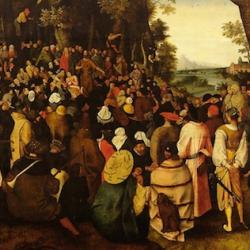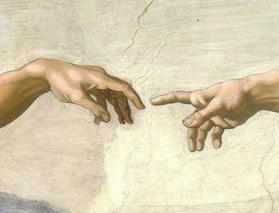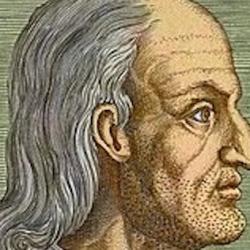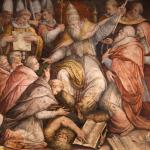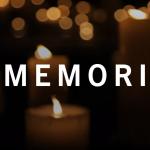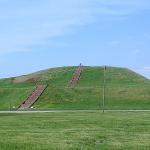Robert Jenson continues his series of essays on Christ as Culture in the January 2004 issue of IJST , arguing that “Christ is Art.” Here are a few of the highlights:
1) Jenson defines art as experimentation with possible worlds. One of his examples is Mondrian: “Mondrian and his allies, who invented truly ‘abstract’ painting, did so by inspiration of and in support of a formulated theology: they were theosophists ?EMondrian was a formal member of the society. He espoused Pythagorean doctrines, that underlying the flux of the perceived world, which the impressionists and various ‘post-impressionists’ had explored, is a world of pure, simple and changeless geometric archetypes. Painting, according to Mondrian, was to induct the viewer into this world, it was, indeed, to save the viewer’s soul.”
2) Jenson goes on to say that the experimentation with possible worlds takes place against the background of a real world. He affirms that “the world as we perceive and so inhabit it is indeed always the world construed by a certain eye, bourgeois, Bolshevik, Hinayana Buddhist or whatever.” Yet, “believers know that there is indeed a standard of our experiments, because there is only one God and all reality is his creation.”
3) He agrees with postmoderns that “we are not in position to access this standard directly,” but only through our “arts” (including, surely, language) and the possible worlds with which we experiment. Yet, there is a “sign” (Jenson doesn’t say proof) that there is a standard, even though we have no direct access to it. This sign is the fact that “artistic production is WORK.” If we there were no world on which to work our experiments, those experiments would not require labor. There is a crucial epistemological point here as well: “Rowan Williams argued that the chief component of a realist epistemology is recognition that at least some knowledge requires to be learned, to be acquired by labor. So also a realist understanding of artistic activity is recognition that an artist must labor to construe his possible world, that he cannot just decree it: he must work ON something, that is, on a given world which indeed neither he nor we can see independently of this labor, but which nevertheless presents itself precisely in the necessity of laboring.” Williams’ point is quite profound: Were subjectivist epistemologies true, and all knowledge merely the projection of the knower, then knowledge would involve no labor at all. The English language, microorganisms, the literature of sensibility ?Eall would simply bow to our all-controlling, all-forming minds. That we have to study to know means that there is a world out there that serves as a standard of what we know.
4) Finally, Christ as art: The Father is artist, and Christ is the art. The Logos is “the particular shape which the world in fact makes” but He is this “precisely [as] an experiment, for nothing binds the Father to make THIS sense ad extra instead of some other sense. The Son is not the sense which the world just has, for apart from the Son precisely as the sense of which he is the experiment, there would BE no world.” There is thus no world that stands over against the Father, which can be used as a test or standard of the Art that is the Son. The Father is the purest Artist, whose experiment in possible worlds is the action world. Jenson says, “Like us,the Father does not know the standard world except as and by his experiment [in the Son]; but unlike us he is not at the mercy of the standard world, which does not exist except as he experiments. Unlike us, the Father does no labor between his experiment and the standard thereof.”
5) This lends a deep jollity to our experience of the world, a profound and weighty lightness. We instinctively, even we Christians, that the world is as the Enlightenment described it: “a vast mechanism, whose basic structure and laws are changeless and eternal, and whose bits of discrete substances interacting in space, like the parts of an engine or like clockwork.” Yet, Christians know that “if God is the Trinity the mechanistic picture of the universe must be false.” Rather, “We inhabit a world that is as free as eer the world taking shape under Picasso’s pencil and yet it is not at all arbitrary, is not subject to deconstruction to make way for another experiement . . . . God . . . IS satisfied with his experiment, he pronounces it good.” This “lightness of being” can be intolerable ?Elife is nothing and less than nothing ?E”unless we know it is an artist’s freedom. If we do know that, then the dogwood tree outside my study window, in its amazing thereness and simultaneously amazing never-the-sameness is above all an occasion for merriment. Then the question, ‘Whyever should there be such a thing as a house, and in particular that perpetually-in-repair mansion across the way?’ ‘Warum gibt es uberhaupts Seiendes und nicht vielmehr Nichts ?’ is not a solicitation of Sein zum Tode but a solicitation of freedom, to join the fun of being something.”
6) To be in Christ, then, is to be an inhabitant of the great experiment himself: “to live in Christ is to live in the rush of the great fugue as God is composing it,” riding “the great Painter’s brush” and skipping “between the great Composer’s hands on the keyboard.”






